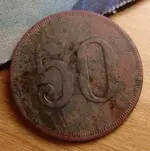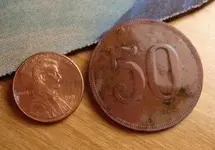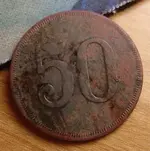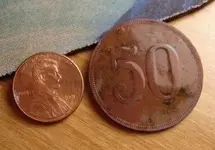Typical general store token sets were 5¢, 10¢, 25¢, 50¢, and $1, but 1¢, $5, and $10 were sometimes used as well. The 1¢ tokens weren't cost effective as they cost about 1¢ to have made, and the higher denomination tokens weren't popular as they represented a LOT of money in those days.
These tokens were used in two primary ways. First, farm people would sell butter and eggs (etc.) to the store and be paid either in cash at a discount since it could be spent anywhere, or in tokens which supposedly could only be spent at the store. Second, if customers needed to borrow money for staples until "the crops come in", the store would loan them money in the form of these tokens. Again, if they loaned cash, the borrower could spend it anywhere, but if they loaned value in the form of tokens, it could supposedly be spent only at the store. I say supposedly because everybody needs to eat, and a lot of other people accepted tokens just the same as cash. Barbers, newspapermen, etc. would often take tokens rather than lose business.
John in ID







